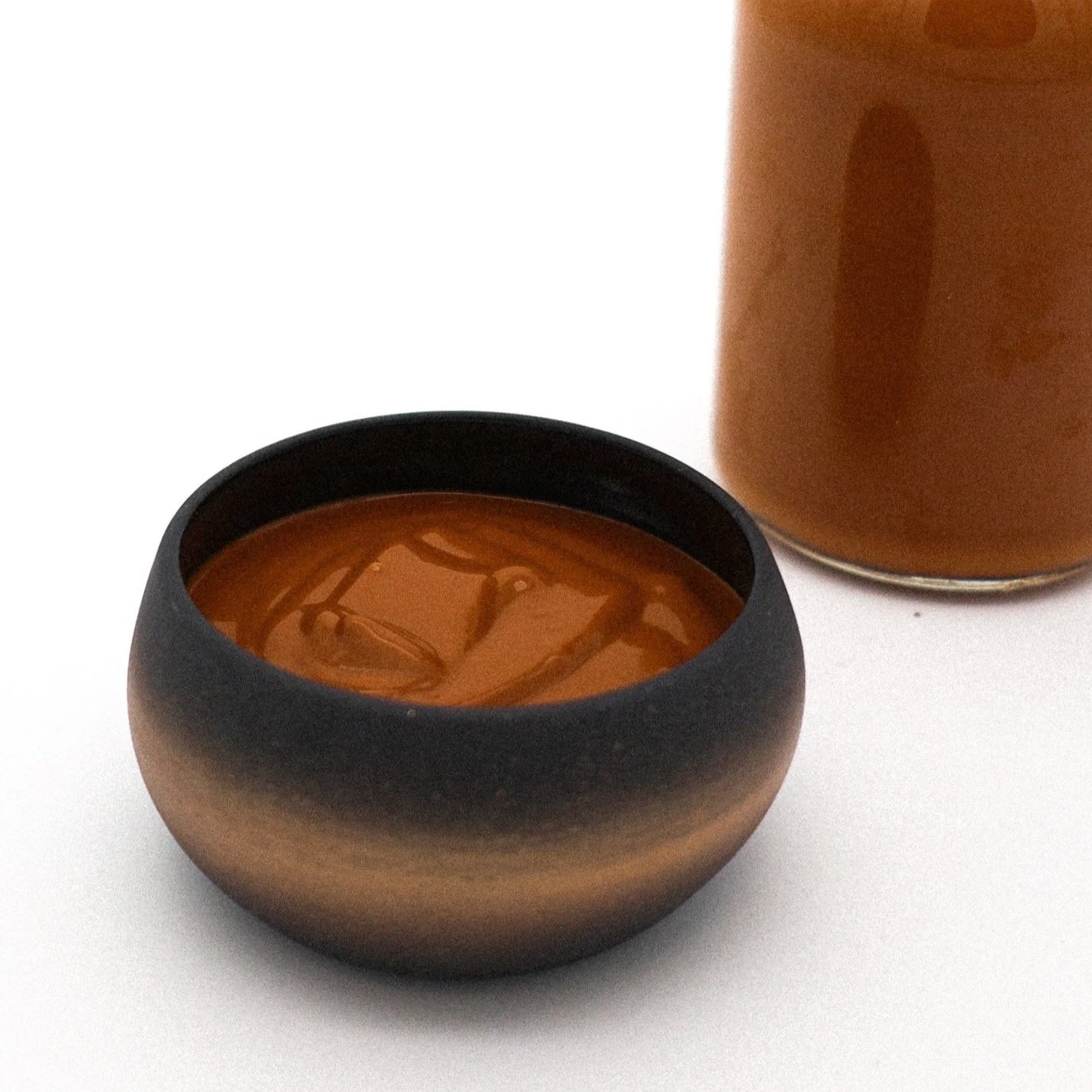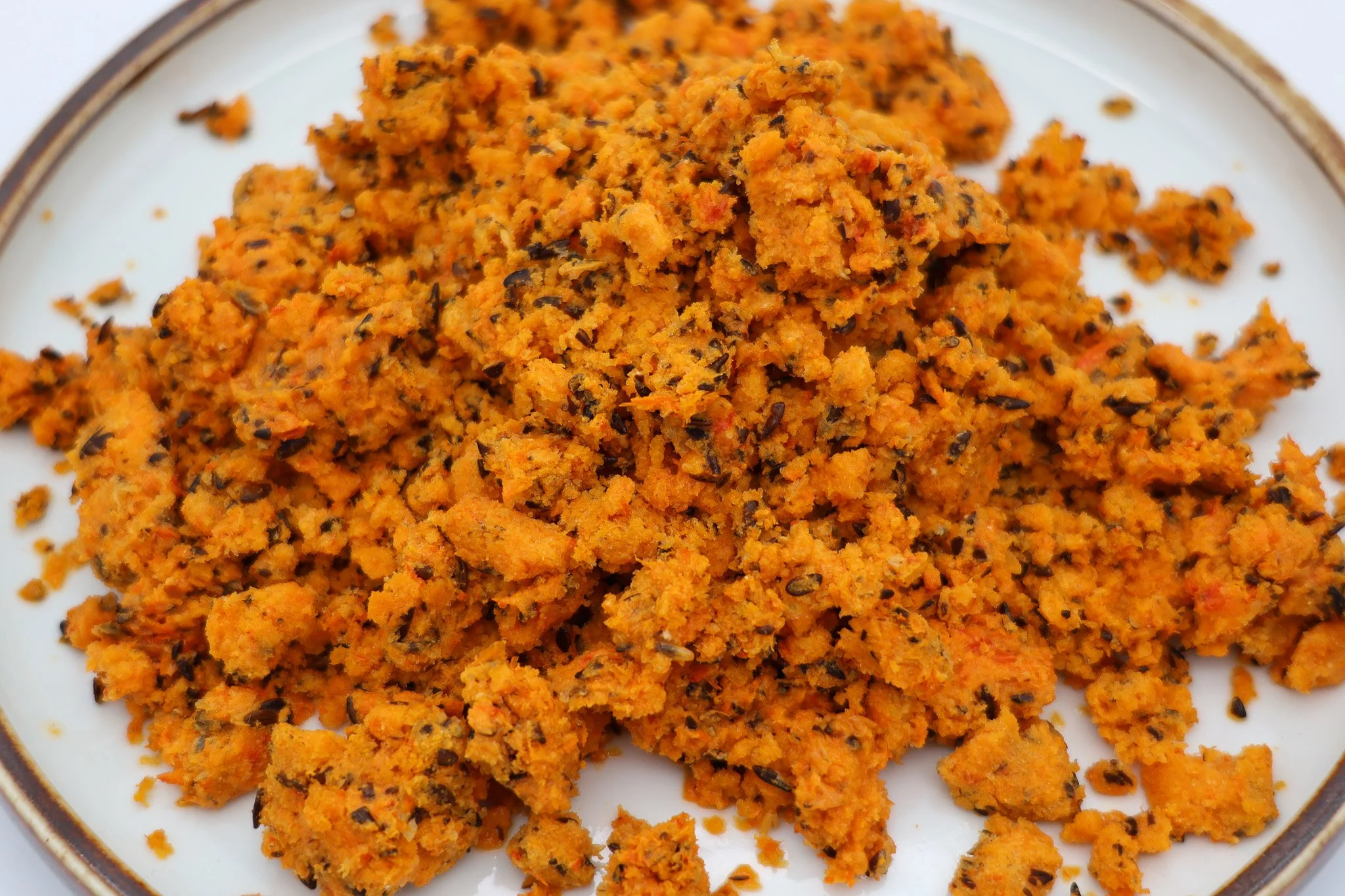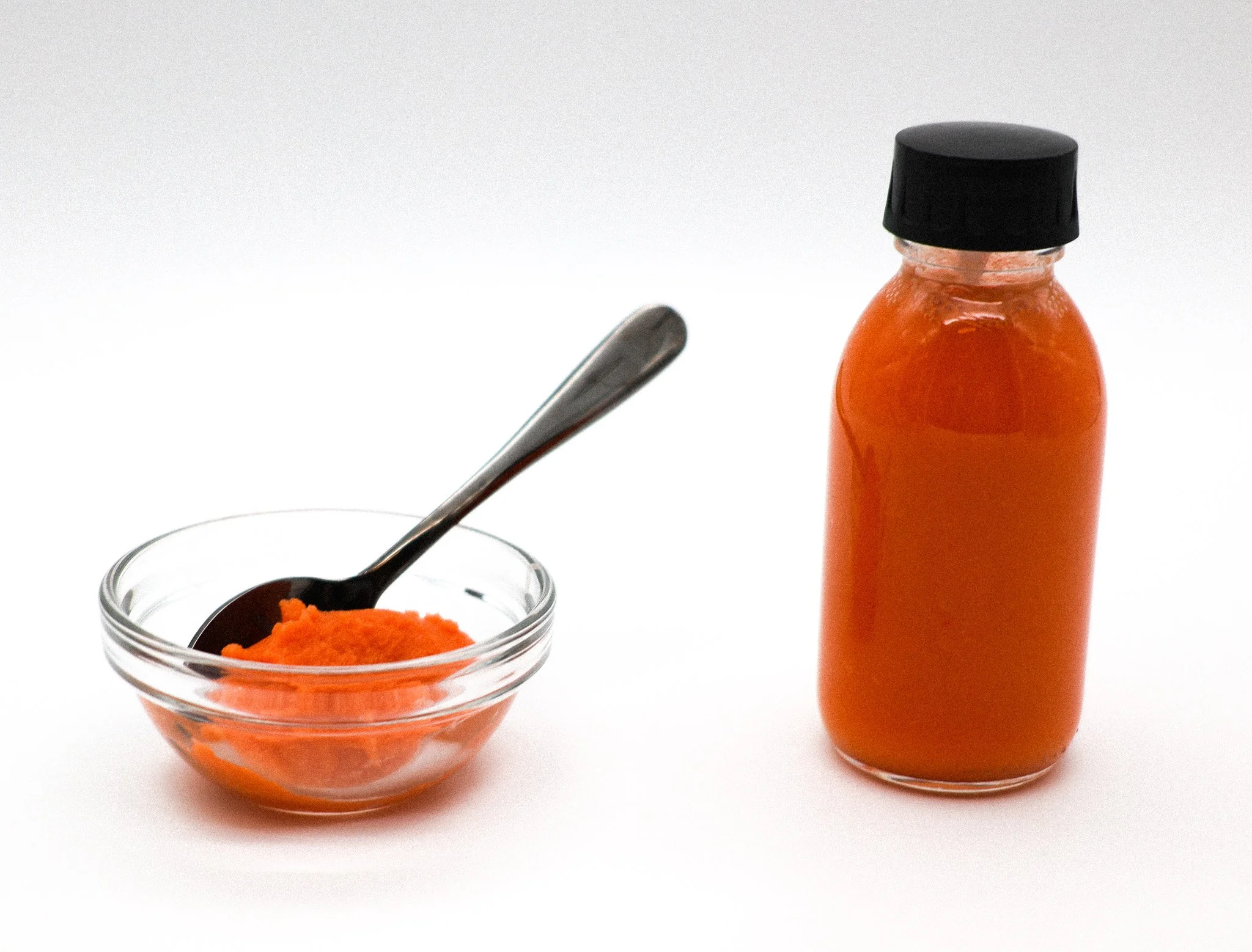Juice presscake hot sauces
This is part of our series on upcycling fruit & veg by-products.
Table of Contents
Sea buckthorn presscake hot sauce
i. Introduction
Imagine walking into your favourite juice bar, ordering your usual drink, and alongside it, discovering a hot sauce made from that very same juice’s presscake. A citrusy hot sauce crafted from orange pulp. A deep, smoky hot sauce made from beet juice presscake. A bright and herbal hot sauce made from the remnants of a veg-packed green ‘superfood’ smoothie.
Juicing presscake is already filled with so much flavour, fibre and body, making it the ideal foundation for vibrant, distinctive hot sauces.
We share two possible combinations here, but by following our simple formula, you can easily make your own based on whatever juice presscake you might have to hand.
Sea buckthorn presscake
ii. Recipe
a. Fermented carrot ‘mango’ hot sauce
Ingredients
250g fermented carrot 'mango'
20g habanero chilli
900ml apple cider vinegar
36g salt
Method
Combine all the ingredients in a blender and blend until smooth.
Adjust for seasoning and spiciness as desired.
Pour into a sterilised bottle and refrigerate to store.
b. Seabuckthorn hot sauce
Method
Combine all the ingredients in a stone mill and mill for 24 hours until smooth.
Adjust for seasoning and spiciness as desired.
Pour into a sterilised bottle and refrigerate to store.
Ingredients
60g sea buckthorn pulp, dehydrated
15g chilli (of your choice; we used whole red serranos)
400g beer vinegar
9g salt
9g sugar
Fermented carrot juice presscake ‘mango’ (left) & hot sauce (right)
iii. Choose your own hot sauce adventure
The recipes shared above are just a couple of suggestions that follow the same formula:
juice presscake + spicy thing + acid + seasoning = hot sauce
From there, the possibilities are almost endless. Why not choose-your-own-adventure, by combining ingredients like these:
| Fruit or veg pulp | Spicy thing | Acid source | Seasoning |
|---|---|---|---|
|
|
|
|
Although you could, in theory, try any combination of ingredients, this formula works best with a bit of discernment about one’s pairings. A more sour presscake, like sea buckthorn, might benefit from a milder vinegar so the hot sauce isn’t overwhelmingly acidic. On the other hand, sweeter or less acidic presscakes, like carrot, could be balanced with a slightly stronger acidic component. Likewise, the salt and any other seasonings might need adjusting depending on which other ingredients you select.
You can certainly adjust the spice level depending on your tolerance. What about a Hot Ones special made with different juice presscake hot sauces on alternative protein ‘wings’? We’re interested if you are, Sean Evans.
One avenue that we’re particularly excited about is fermenting the juice presscake before turning it into hot sauce, as we did for the fermented carrot presscake ‘mango’.
If you don’t have access to a stone mill, you could also use a high-speed blender, though this may result in a less smooth texture, particularly for more fibrous presscakes. You may also want to pass your blended presscake through a fine sieve or mesh to remove any seeds or hard pieces, or adjust the water content depending upon your desired consistency and whether you’re using dried or fresh juice presscake.
Juice bars, cafés, and other high-volume juicing operations typically collect all their presscake in the same bin, resulting in a mix of ingredients. So mixed ingredient presscake hot sauces could be interesting to explore to make the most of what’s available and minimise waste. However, because the mix would vary daily based on customer orders, it would be difficult to produce a consistent product without separating the presscakes by type. That could be a fun, creative challenge, but could also taste indistinct or even unpleasant, so it may not be gastronomically ideal and could be a good reason to separate popular juice presscakes to produce certain hot sauces more consistently.
Contributions & acknowledgements
Kim performed the original culinary R&D. Aly reproduced Kim’s recipe and documented the process with additional notes, which Eliot used to help write the article following further discussions with Kim. Josh contributed editorial feedback. Aly photographed the final product in our food lab.
This recipe has roots in Kim’s previous work as Head of R&D at the former Amass Restaurant in Copenhagen. Thanks to Amass for facilitating such trailblazing work in culinary upcycling and holistic sustainability.






